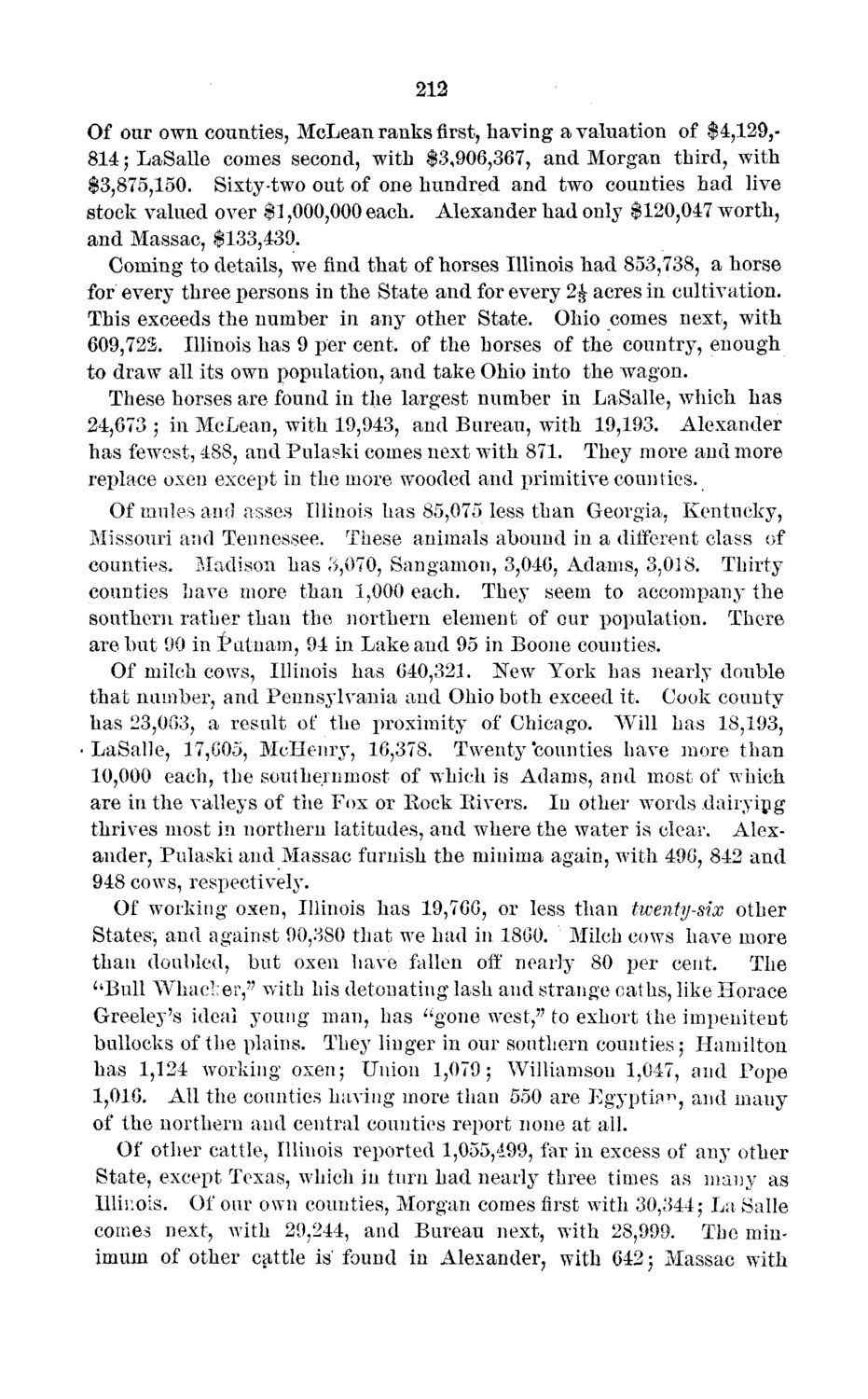| |
| |
Caption: Board of Trustees Minutes - 1873
This is a reduced-resolution page image for fast online browsing.

EXTRACTED TEXT FROM PAGE:
212 Of our own counties, McLean ranks first, having a valuation of $4,129,814; LaSalle comes second, with $3,906,367, and Morgan third, with $3,875,150. Sixty-two out of one hundred and two counties had live stock valued over $1,000,000 each. Alexander had only $120,047 worth, and Massac, $133,439. Coming to details, we find that of horses Illinois had 853,738, a horse for every three persons in the State and for every 2J acres in cultivation. This exceeds the number in any other State. Ohio comes next, with 609,722. Illinois has 9 per cent, of the horses of the country, enough to draw all its own population, and take Ohio into the wagon. These horses are found in the largest number in LaSalle, which has 24,673 ; in McLean, with 19,943, and Bureau, with 19,193. Alexander has fewest, 488, and Pulaski comes next with 871. They more and more replace oxen except in the more wooded and primitive counties. Of mules and asses Illinois has 85,075 less than Georgia, Kentucky, Missouri and Tennessee. These animals abound in a different class of counties. Madison has 3,070, Sangamon, 3,046, Adams, 3,018. Thirty counties have more than 1,000 each. They seem to accompany the southern rather than the northern element of our population. There are but 90 in l 3 iitnam, 94 in Lake and 95 in Boone counties. Of milch cows, Illinois has 640,321. New York has nearly double that number, and Pennsylvania and Ohio both exceed it. Cook county has 23,063, a result of the proximity of Chicago. Will has 18,193, • LaSalle, 17,605, Mcllenry, 16,378. Twenty'counties have more than 10,000 each, the southernmost of which is Adams, and most of which are in the valleys of the Fox or Eock Eivers. In other words dairying thrives most in northern latitudes, and where the water is clear. Alexander, Pulaski and Massac furnish the minima again, with 496, 842 and 948 cows, respectively. Of working oxen, Illinois has 19,766, or less than twenty-six other States, and against 90,380 that we had in 1860. Milch cows have more than doubled, but oxen have fallen off nearly 80 per cent. The a Bull Whacker," with his detonating lash and strange oaths, like Horace Greeley's ideal young man, has "gone w^est," to exhort the impenitent bullocks of the plains. They linger in our southern counties $ Hamilton has 1,124 working oxen; Union 1,079 5 Williamson 1,047, and Pope 1,016. Ail the counties having more than 550 are Egyptian, and many of the northern and central counties report none at all. Of other cattle, Illinois reported 1,055,499, far in excess of any other State, except Texas, which in turn had nearly three times as many as Illinois. Of our own counties, Morgan comes first with 30,344; La Salle comes next, with 29,244, and Bureau next, with 28,999. The minimum of other cattle is' found in Alexander, with 642 5 Massac with
| |